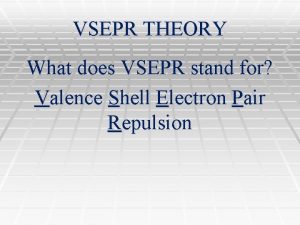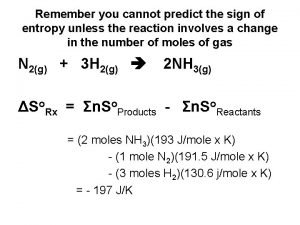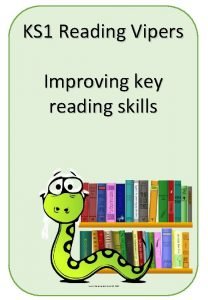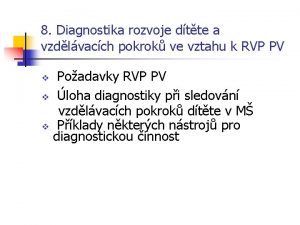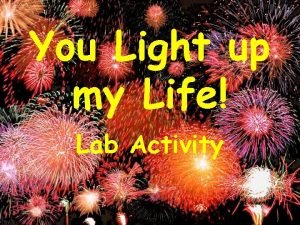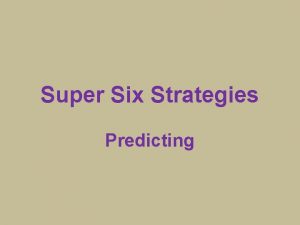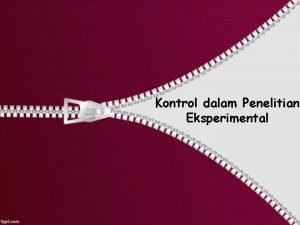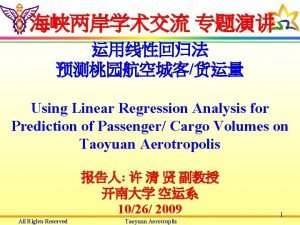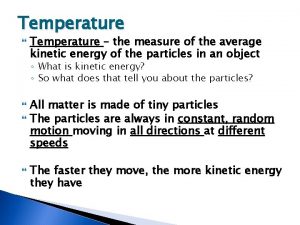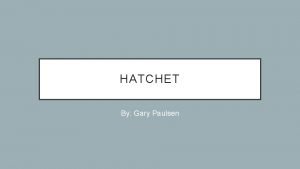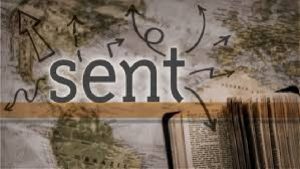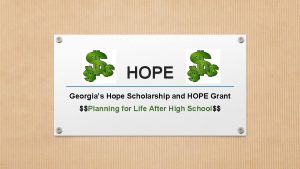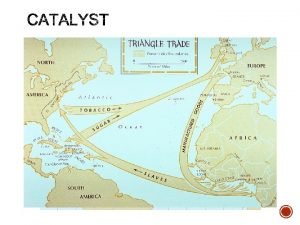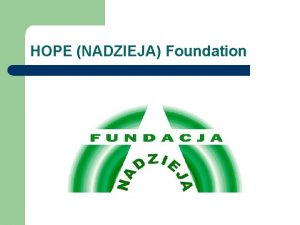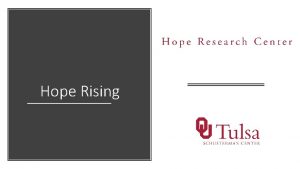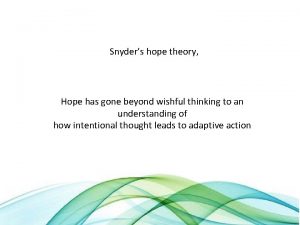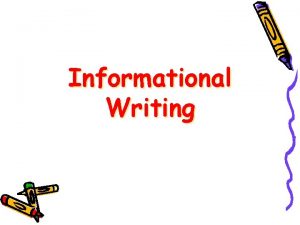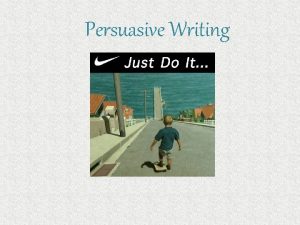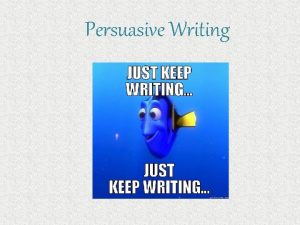Using Hope Theory and Writing Hope to Predict














- Slides: 14

Using Hope Theory and Writing Hope to Predict, Shape, and Increase Success across Writing Classroom Contexts Casey Reid, UCM and ODU Casey Reid (mreid@ucmo. edu) "Using Hope Theory and Writing Hope" SSW 2016 1

Overview • Basics: What is Hope and Writing Hope? • Rationale: Why Hope and Writing Hope? • Assessments: How Can I Measure Hope and Writing Hope? • Course Materials and Assignment Ideas: How Can I Use Hope and Writing Hope? • Q&A Casey Reid (mreid@ucmo. edu) "Using Hope Theory and Writing Hope" SSW 2016 2

Basics: What is Hope and Writing Hope? • Hope theory = goal attainment process • Desired goals • Pathways (steps, people, processes) toward goal • Agency (sense of ability to achieve and motivation) • Writing hope = writingrelated goal attainment process • Desired writing goals • Pathways: “metacognitive strategies analyzed and utilized to accomplish a writing goal” (Sieben 54) • Agency: “emotional, affective motivation to want to continue working toward a writing goal and to begin a new writing task (Sieben & Rose, 2012)” (cited in Sieben 54) • Key researchers: C. R. Snyder and Shane Lopez • Key researcher: Nicole Casey Reid (mreid@ucmo. edu) "Using Hope Theory and. Sieben Writing Hope" SSW 2016 3

The Hope Cycle Pathway s Present Self Goal Agency Graphic courtesy of Connie Flick-Hruska and Jim Mc. Graw (2013) Casey Reid (mreid@ucmo. edu) "Using Hope Theory and Writing Hope" SSW 2016 4

Rationale: Why Hope? High hope = • less anxiety • higher grades • higher graduation rate - “better predictor of academic success than Source: Grasgreen (2012) intelligence, personality or previous academic performance” (Grasgreen) Casey Reid (mreid@ucmo. edu) "Using Hope Theory and Writing Hope" SSW 2016 5

Why Writing Hope? • Predictive ability: “writing hope pathways significantly predicted writing ability” (Sieben 101) • Impact course outcomes (performance on writing tasks, grades, transitions, etc. ) • Creates common language in classroom • Sense of agency be built and help “make writing matter to students” through use of “positive writing experiences and environments” and “authentic audiences” (102 -103) • Develop pathways toward success with writing goals through explicit conversations about writing strategies, navigation of potential obstacles and problems during writing process, and reflection throughout the writing process (108) Casey Reid (mreid@ucmo. edu) "Using Hope Theory and Writing Hope" SSW 2016 6

Hope is • • Malleable Adaptable Accessible Inclusive Relevant Positive Empowering and Motivating Social Justice Oriented (Sieben 122) Casey Reid (mreid@ucmo. edu) "Using Hope Theory and Writing Hope" SSW 2016 7

Assessments Casey Reid (mreid@ucmo. edu) "Using Hope Theory and Writing Hope" SSW 2016 8

Usage Thoughts • Fast and free non-cognitive inventory • Can be part of other assessment initiatives—think retention • Good for pre- and post-assessment comparisons (Sieben 114) FYI: must establish operational definitions of low, average, and high hope students for your institution; see Chaffey College’s work determining Low vs. Average vs. High Hope Casey Reid (mreid@ucmo. edu) "Using Hope Theory and Writing Hope" SSW 2016 9

Course Materials and Assignment Ideas Casey Reid (mreid@ucmo. edu) "Using Hope Theory and Writing Hope" SSW 2016 10

Course Materials Thoughts • Works with a variety of pedagogies and theoretical approaches • Can be short, one-shot activities (minimum impact) or a theme for an entire course • Can be used as a tool for metacognitive reflection throughout the writing process • Works well for multimodal and application-based assignments • Language can be incorporated into conferences and other conversations Casey Reid (mreid@ucmo. edu) "Using Hope Theory and Writing Hope" SSW 2016 11

Resources! • Hope Monger: http: //shanelopez. com/ • Writing HOPE Works: http: //www. writinghopework s. com/ • Chaffey College’s “Hope and Mindset Theories and Strategies”: http: //www. chaffey. edu/title v/strategies. html Casey Reid (mreid@ucmo. edu) "Using Hope Theory and Writing Hope" SSW 2016 12

Q&A Casey Reid, University of Central Missouri and Old Dominion University mreid@ucmo. edu or mreid 002@odu. edu Casey Reid (mreid@ucmo. edu) "Using Hope Theory and Writing Hope" SSW 2016 13

Works Cited Grassgreen, Allie. “Here’s Hoping. ” Inside Higher Ed, 6 July 2012. Web. 13 Sep. 2013. Sieben, Nicole. Writing Hope, Self-Regulation, and Self. Efficacy as Predictors of Writing Ability in First-Year College Students. Casey Reid (mreid@ucmo. edu) "Using Hope Theory and Writing Hope" SSW 2016 Diss. Hofstra University, 2013. Ann Arbor: 14
 Axe4 molecular shape
Axe4 molecular shape What does the vsepr theory stand for
What does the vsepr theory stand for δhsys
δhsys Vipers summarise
Vipers summarise Vipers literacy shed
Vipers literacy shed Zkratka nnn
Zkratka nnn You light up my life classifying substances answer key
You light up my life classifying substances answer key Predict-o-gram
Predict-o-gram Randomisasi dalam penelitian eksperimen
Randomisasi dalam penelitian eksperimen Predict cyber crime
Predict cyber crime Linear regression predict
Linear regression predict Gratifying in a sentence
Gratifying in a sentence Predict whether plastic foam which contains
Predict whether plastic foam which contains Chapter 1 hatchet
Chapter 1 hatchet Noble gas period 6
Noble gas period 6

